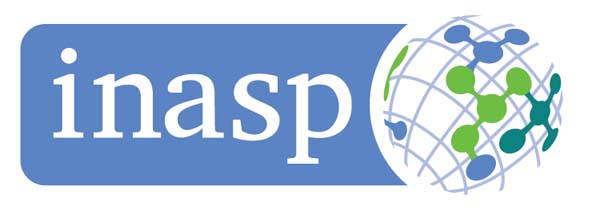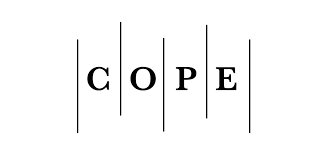An Efficient Algorithm for Automated Skin Lesion Detection: A Non-Machine Learning Approach
DOI:
https://doi.org/10.29304/jqcsm.2024.16.31638Keywords:
Skin Lesion Detection, Cancer Diagnostic, Advanced Image ProcessingAbstract
Skin lesion detection is a very important task in medical applications such as disease diagnostic and cancer detection. This paper suggests an efficient algorithm for skin lesion detection relying on advanced image processing techniques without using machine learning or deep learning algorithms. A set of algorithms is proposed to enhance traditional image processing methods to scrutinize dermatological images, concentrating on melanoma detection. The proposed method combines color space transformation, contrast enhancement, active contour segmentation. ABCD criteria (Asymmetry, Border irregularity, Color variegation, and Diameter) is used in feature extraction. The approach is evaluated on the ISIC (International Skin Image Collaboration) 2020 dataset, accomplishing an accuracy of 84% in differentiating between malignant and benign skin lesions. The results indicate the potential of non-machine learning techniques in dermatological image analysis, providing computationally efficient and interpretable alternative to data-intensive deep learning algorithms.
Downloads
References
R. L. Siegel, K. D. Miller, and A. Jemal, “Cancer statistics, 2020,” CA Cancer J Clin, vol. 70, no. 1, pp. 7–30, Jan. 2020, doi: 10.3322/caac.21590.
A. B. Cognetta, T. Vogt, M. Landthaler, O. Braun-Falco, and G. Plewig, “The ABCD rule of dermatoscopy: High prospective value in the diagnosis of doubtful melanocytic skin lesions,” J Am Acad Dermatol, vol. 30, no. 4, pp. 551–559, 1994, doi: 10.1016/S0190-9622(94)70061-3.
2018 IEEE 15th International Symposium on Biomedical Imaging : 4-7 April 2018, Washington, DC, USA. Institute of Electrical and Electronics Engineers, 2018.
M. Silveira et al., “Comparison of segmentation methods for melanoma diagnosis in dermoscopy images,” IEEE Journal on Selected Topics in Signal Processing, vol. 3, no. 1, pp. 35–45, 2009, doi: 10.1109/JSTSP.2008.2011119.
R. Garnavi, M. Aldeen, and J. Bailey, “Computer-aided diagnosis of melanoma using border- and wavelet-based texture analysis,” IEEE Transactions on Information Technology in Biomedicine, vol. 16, no. 6, pp. 1239–1252, 2012, doi: 10.1109/TITB.2012.2212282.
R. B. Oliveira, N. Marranghello, A. S. Pereira, and J. M. R. S. Tavares, “A computational approach for detecting pigmented skin lesions in macroscopic images,” Expert Syst Appl, vol. 61, pp. 53–63, Nov. 2016, doi: 10.1016/j.eswa.2016.05.017.
R. Kasmi and K. Mokrani, “Classification of malignant melanoma and benign skin lesions: Implementation of automatic ABCD rule,” IET Image Process, vol. 10, no. 6, pp. 448–455, Jun. 2016, doi: 10.1049/iet-ipr.2015.0385.
O. Abuzaghleh, B. D. Barkana, and M. Faezipour, “Noninvasive real-time automated skin lesion analysis system for melanoma early detection and prevention,” IEEE J Transl Eng Health Med, vol. 3, 2015, doi: 10.1109/JTEHM.2015.2419612.
V. Rotemberg et al., “A patient-centric dataset of images and metadata for identifying melanomas using clinical context,” Sci Data, vol. 8, no. 1, Dec. 2021, doi: 10.1038/s41597-021-00815-z.
N. K. EL Abbadi and E. Saleem, “Automatic gray images colorization based on lab color space,” Indonesian Journal of Electrical Engineering and Computer Science, vol. 18, no. 3, pp. 1501–1509, 2020, doi: 10.11591/ijeecs.v18.i3.pp1501-1509.
K. Zuiderveld, “Contrast limited adaptive histogram equalization,” in Graphics Gems IV, USA: Academic Press Professional, Inc., 1994, pp. 474–485.
A. L. Albukhnefis, T. T. Al-Fatlawi, and A. Hakem Alsaeedi, “Image Segmentation Techniques: An In-Depth Review and Analysis,” Journal of Al-Qadisiyah for Computer Science and Mathematics, vol. 16, no. 2, Jun. 2024, doi: 10.29304/jqcsm.2024.16.21613.
Y. Kumar and G. Sahoo, “Prediction of different types of liver diseases using rule based classification model,” Technology and Health Care, vol. 21, pp. 417–432, 2013, doi: 10.3233/THC-130742.
Downloads
Published
How to Cite
Issue
Section
License
Copyright (c) 2024 Adil Lateef Albukhnefis

This work is licensed under a Creative Commons Attribution-NonCommercial-NoDerivatives 4.0 International License.













